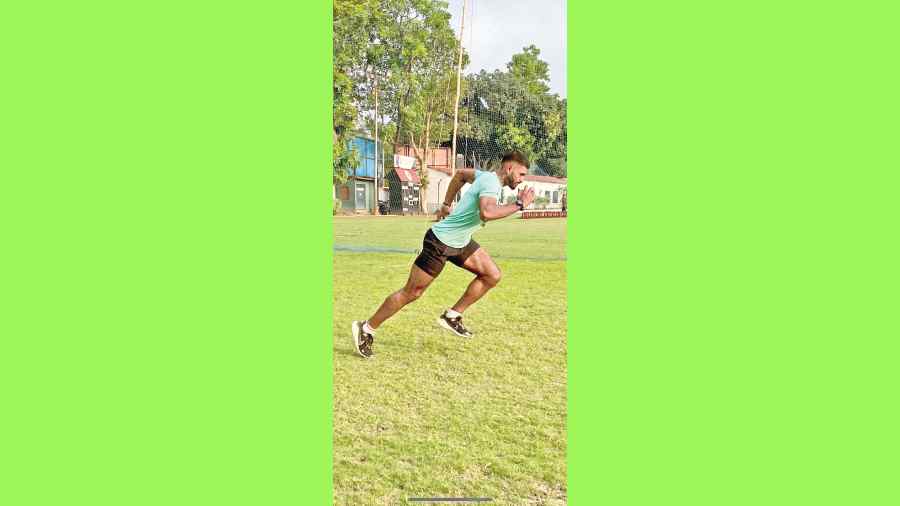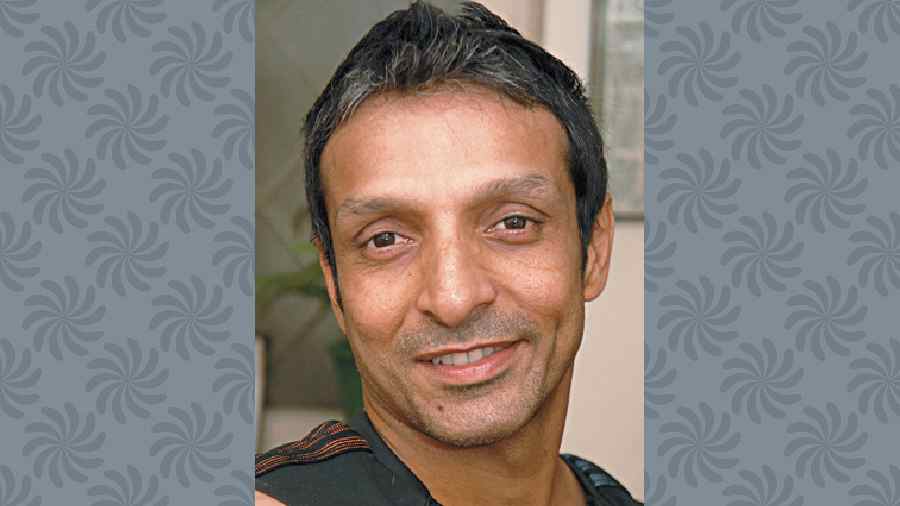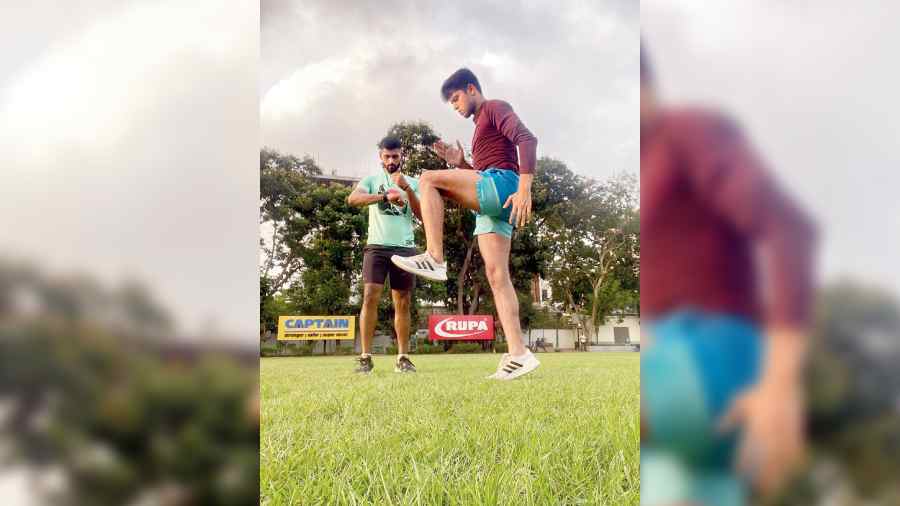A few weeks ago, I had reiterated about the importance of primal pattern movements and mentioned gait as one of the essential patterns of life’s movements. Gait is perhaps the most underrated and under-trained of all the patterns. Yet, almost all humans walk or run every day in some form or the other.
Gait is a word that describes how animals ambulate on their limbs. We humans tend to ambulate most of the time on two legs, particularly during walking, running, climbing or jumping. Until man got familiar with agricultural techniques about a 100 centuries back, human gait was responsible for our survival (hunting). Most tribes were nomadic hunter gatherers and would have to follow animal herds for many miles so that food source was near at hand. Without the ability of quick movement (sprinting) it would be impossible to catch the animal. Also, our paths would cross with several predators who we would have to escape from using explosive, swift and powerful movements. If we were lucky to kill an animal we would have to carry it back to camp to cook and eat. These activities would definitely need strong gait patterns.
Attention to muscle balance and coordination
There are three distinct speeds of gait — walking, jogging and running. While the speed of recruitment, cadence and tempo may be different for the three patterns, the basic neuro muscular engram required for these are very similar. For example, the human ankle needs to achieve a range of anything between 16 to 20 degrees (dorsiflexion) while moving in all these forms otherwise there is always a threat of musculoskeletal pain and injury in the entire kinetic chain including the knees, shin and lower back.
Similarly, the hip, knees and the scapulae muscles need to achieve a range of movement in order to ambulate efficiently and effectively. Repetitive ambulation with dysfunctional muscles and poor movement will ultimately lead to pain and disability. Yet, millions of people all over the world go for “recreational” walks with the perceived benefit of health and wellness. Still they pay scarce attention to muscle balance and coordination. Health and wellness will only be achieved if the gait pattern is efficient. And efficient walking requires good muscle balance and coordination of all the muscles, including the muscles of the core, the muscles that move the limbs and particularly the shoulder and hip extensors. Any muscle imbalance will lead to poor walking (gait) patterns and lead to injury and pain in future.
Since walking is such a daily, unavoidable even mandatory routine for us, we take it for granted and don’t realise that a faulty walking pattern is actually a screen that indicates what lies within. In most cases, it is muscle imbalance or dysfunction. In some cases, it could be a joint pathology. A poor walking pattern will graduate into a faulty running mechanism.
There are two main phases within a gait (walking and running) pattern — the stance phase and the swing phase. The stance phase further can also be divided into contact, mid-stance and propulsive phase. During the stance phase, the heel strikes the ground, then the foot falls flat before the heel-off followed by the toe-off. The swing phase includes the acceleration-swing and deceleration. Since running involves speed and more physical load, any dysfunction that may exist are driven deeper into the neuromuscular system. Recreational and competitive athletes would do well to note that according to internationally renowned corrective and performance enhancement coach, Leigh Brandon: “ Any muscle imbalance will create what is known as ‘power-leaks’, which will lead to reduction of force production and efficiency and therefore reduce top speed and use more energy at relative speeds.”.

Running is a combination of stride length and stride frequency
Good running mechanics
Advocates of health walking, please do not get me wrong. I am not, for once, saying that walking is a lame exercise. There are certain mood elevating benefits of being outdoors in nature — enjoying the sunshine and hearing the birds chirp — that have a profoundly positive effect on the parasympathetic nervous system.
All I am saying is that walking doesn’t quite deliver optimal benefits to the musculoskeletal system unless the gait pattern has good bio-kinetics. Also a certain amount of speed (running, sprinting and so on) is necessary to have a positive loading adaptation on the metabolic and musculo skeletal system. Early man used speed for escape, hunting and attack. All these patterns are already ingrained in our neuromuscular memory. I can’t believe that optimum health and wellness is possible without regular practice of these movement patterns.
Running speed is the interaction of stride length and stride frequency. Both are important during initial acceleration, but stride length has a greater impact on maximum velocity. As speed increases, impulse production becomes increasingly dependent on the ability to generate force rapidly, according to the Baechle and Earle (Essentials of Strength and Conditioning).
According to Spandan Dutta, CSCS, running and conditioning coach at Endorphins: “Everyone can be taught good running mechanics. While the ability to generate high levels of speed may be partly genetically predisposed, good technique is largely a result of repetitive practice of sound mechanical principles”.
Good running technique, by and large are characterised by the following:
• Good knee flexion with high knee lift.
• Rapid foot descent with foot moving rapidly backward on ground strike.
• Foot contact directly beneath or a very short distance in front of the centre of gravity.
• Ability to minimise horizontal braking forces and vertical displacement during each foot strike.

Ranadeep Moitra is a strength and conditioning specialist and corrective exercise coach






